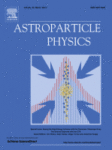 The Monte Carlo simulation of the Borexino detector
The Monte Carlo simulation of the Borexino detector
Astroparticle Physics, Volume 97, 2018, Pages 136-159
ISSN 0927-6505
Published 17 October 2017.
Abstract
We describe the Monte Carlo (MC) simulation of the Borexino detector and the agreement of its output with data. The Borexino MC “ab initio” simulates the energy loss of particles in all detector components and generates the resulting scintillation photons and their propagation within the liquid scintillator volume. The simulation accounts for absorption, reemission, and scattering of the optical photons and tracks them until they either are absorbed or reach the photocathode of one of the photomultiplier tubes. Photon detection is followed by a comprehensive simulation of the readout electronics response. The MC is tuned using data collected with radioactive calibration sources deployed inside and around the scintillator volume. The simulation reproduces the energy response of the detector, its uniformity within the fiducial scintillator volume relevant to neutrino physics, and the time distribution of detected photons to better than 1% between 100 keV and several MeV. The techniques developed to simulate the Borexino detector and their level of refinement are of possible interest to the neutrino community, especially for current and future large-volume liquid scintillator experiments such as Kamland–Zen, SNO+, and Juno.